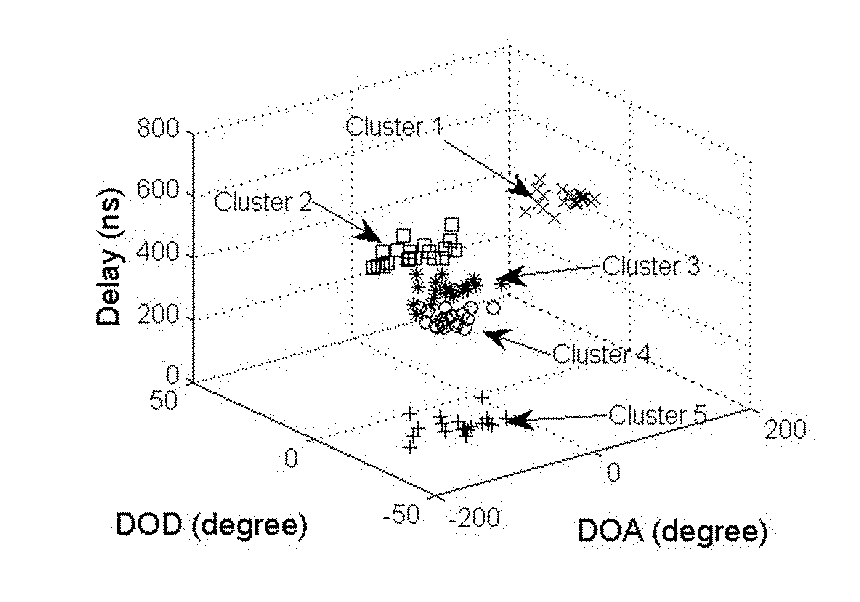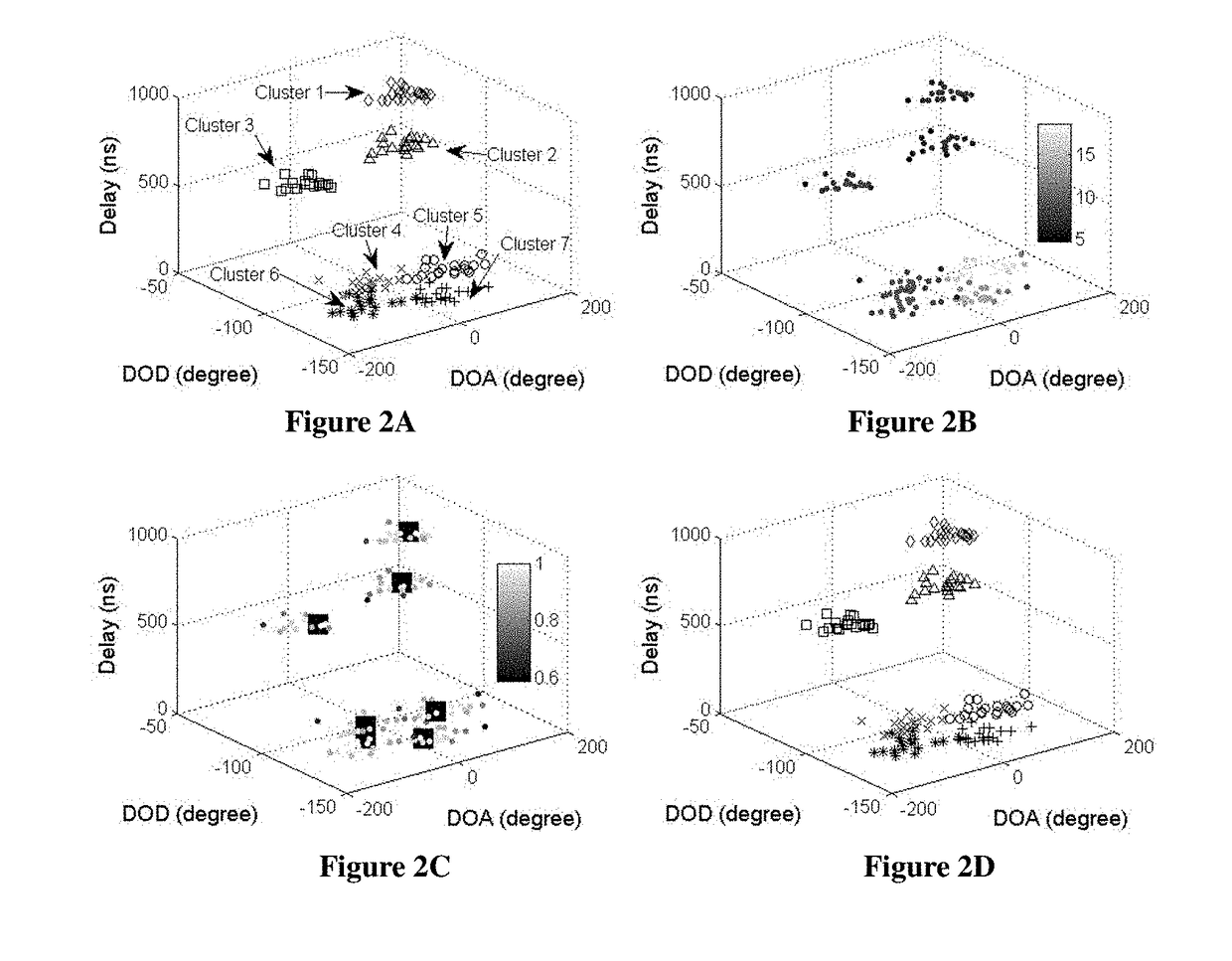Method for clustering wireless channel mpcs based on a kpd doctrine
a wireless channel and multi-path technology, applied in the field of clustering wireless channel and multi-path components (mpcs) based on a kpd doctrine, can solve the problems large bandwidth of 3g, 4g, etc., and achieve the effect of large multi-dimensional data, large multi-dimensional data, and large multi-dimensional data
- Summary
- Abstract
- Description
- Claims
- Application Information
AI Technical Summary
Benefits of technology
Problems solved by technology
Method used
Image
Examples
Embodiment Construction
[0034]FIG. 1A shows the simulated 5 clusters of MPCs, which are plotted using different markers. FIG. 1B shows the MPC density ρ, where brightness indicates the level of ρ. FIG. 1C shows the relative density ρ*, where brightness indicates the level of ρ*. The 5 solid squares are the core MPCs with ρ*=1. FIG. 1D shows clustering results with the KPD algorithm, where clusters are plotted with different markers.
[0035]FIG. 2A shows the simulated 7 clusters of MPCs, which are plotted using different markers. FIG. 2B shows the MPC density ρ, where brightness indicates the level of ρ. FIG. 2C shows the relative density ρ*, where brightness indicates the level of ρ*. The 7 solid squares are the core MPCs with ρ*=1. FIG. 2D shows clustering results with the KPD algorithm, where clusters are plotted with different markers.
[0036]FIG. 3A shows simulated clusters of MPCs, where the raw clusters are plotted with different markers. FIG. 3B shows clustering results with the proposed KPD algorithm. ...
PUM
 Login to View More
Login to View More Abstract
Description
Claims
Application Information
 Login to View More
Login to View More - R&D
- Intellectual Property
- Life Sciences
- Materials
- Tech Scout
- Unparalleled Data Quality
- Higher Quality Content
- 60% Fewer Hallucinations
Browse by: Latest US Patents, China's latest patents, Technical Efficacy Thesaurus, Application Domain, Technology Topic, Popular Technical Reports.
© 2025 PatSnap. All rights reserved.Legal|Privacy policy|Modern Slavery Act Transparency Statement|Sitemap|About US| Contact US: help@patsnap.com



